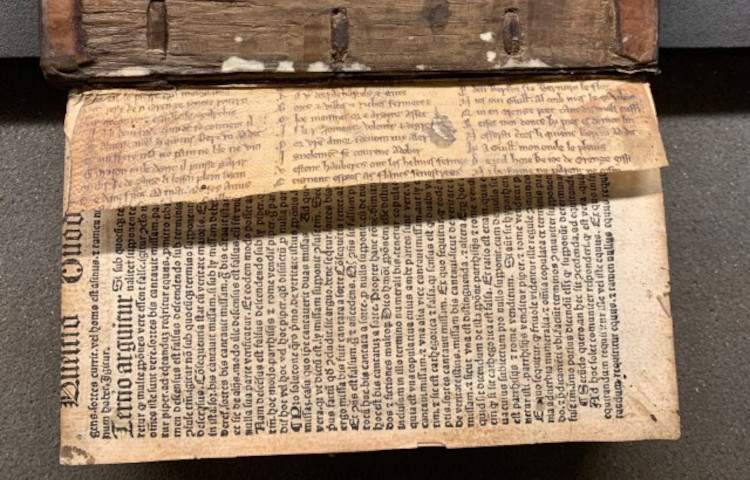A researcher at Queen Mary University of London, Tamara Atkin, an expert in English literature and book historian, has discovered two rare manuscript fragments hidden in a 16th-century book in the Bodleian Library in Oxford. They are a fragment telling part of the famous story of Tristan and Isolde and a fragment of a lost poem that scholars, though aware of its existence, had not yet found.
The two manuscript fragments were discovered as part of Leverhulme Trust -funded research conducted by Dr. Atkin on the reuse and recycling of old books in the Bodleian Library. Immediately noting the importance of this find, Atkin approached academics at the University of Bristol, the University of Edinburgh, and the University of British Columbia to try to identify them. The scholars are still working together to analyze the two parchment fragments: they are thought to be parts of two French poems, namely Béroul’s Roman de Tristan and the Siège d’Orange, the latter hitherto believed lost.
Béroul’s poem dates from the 12th century and is one of the earliest versions of the story of Tristan and Isolde. Until now, the only evidence of its existence was an incomplete 13th-century manuscript preserved in the Bibliothèque Nationale de France. The rediscovered fragment, which is very different from the longer version, shows a wider circulation of the poem than previously understood.
The Siège d’Orange, on the other hand, is a lost poem from a cycle of chansons de geste about Guillaume d’Orange. The new fragment, consisting of only 47 lines, offers a small portion of what would once have been a much longer poem. However, its discovery proves the existence of a poem hitherto believed to be completely lost. It appears to have come from a copy of the poem made in England, written in the French (Anglo-Norman) form that was in use in England at the time.
Both fragments were found in the binding of a book from 1528.
“When I first opened this book,” says Tamara Atkin, “I was extremely excited. It is not uncommon to find manuscripts discarded as garbage in the bindings of other books, but they are generally in Latin and often deal with religion. It is relatively rare to find manuscripts containing poems written in the everyday language, and to find two in one book is even rarer! It is very likely that the manuscripts from which the fragments were taken were cut in the binding and used as ’scraps’ in the binding of this book. I look forward to discovering the full meaning of these fragments.”
Combining expertise, the team will now try to find out more about the fragments, when and where they were copied, and how they were bound into a printed book many centuries later. Scholars will produce full transcriptions and translations of the fragments, along with descriptions of their manuscript and bibliographic contexts, to get a clearer picture of their relationship to the Tristan and Guillaume traditions.
Pictured is the Siège d’Orange fragment. Photo by Tamara Atkin, courtesy of the Bodleian Library.
 |
| Queen Mary University researcher discovers two rare manuscript fragments hidden in the Bodleian Library |
Warning: the translation into English of the original Italian article was created using automatic tools. We undertake to review all articles, but we do not guarantee the total absence of inaccuracies in the translation due to the program. You can find the original by clicking on the ITA button. If you find any mistake,please contact us.